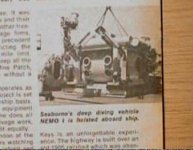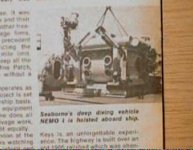rgecy
Bronze Member
Well since I was showing off the magnetometer, I came across some of the picts of the ROV my Son and I built.? It has proven useful to about 60ft and has a great image if water visibility is good.? Thats the only problem here in SC, we have terrible vis.? Less then 5 feet some times.? The vis only gets good when you get offshore 10-15 miles.? None the less, it has proven to be a fun project!
It's a modified version of the Sea Fox ROV in the book by Harry Bohm, "Build your own underwater robot."? Here are some great ROV links if anyone is interested.? This design can be built for less than $300.
http://groups.yahoo.com/group/robotrov/?yguid=195345130? ? ROV Forum
http://home.comcast.net/~homebuiltrovs/? ? ?Steve Thones ROV Page
http://members.rott.chello.nl/rengelsman/? ? ? Link to ROV Links? (See Homebuilt ROVs at bottom)
http://jackson.parcabul.com/rov/index.html? ? ?Doug Jackson's ROV Page
You can see the original version I built using the bilge pumps and the modified version wher I converted the bilge pumps to thrusters.Robert in SC
It's a modified version of the Sea Fox ROV in the book by Harry Bohm, "Build your own underwater robot."? Here are some great ROV links if anyone is interested.? This design can be built for less than $300.
http://groups.yahoo.com/group/robotrov/?yguid=195345130? ? ROV Forum
http://home.comcast.net/~homebuiltrovs/? ? ?Steve Thones ROV Page
http://members.rott.chello.nl/rengelsman/? ? ? Link to ROV Links? (See Homebuilt ROVs at bottom)
http://jackson.parcabul.com/rov/index.html? ? ?Doug Jackson's ROV Page
You can see the original version I built using the bilge pumps and the modified version wher I converted the bilge pumps to thrusters.Robert in SC


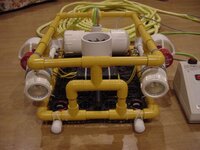
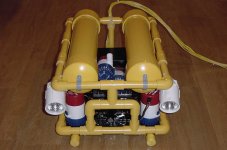
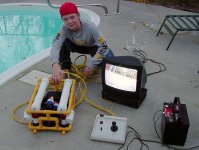

 .
.